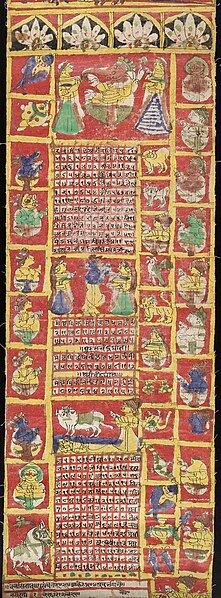The Bumbling God Part 3
As Krishna continued his life in
the village, many of the villagers suddenly began to have dreams which urged
them to leave the city and as these dreams continued for many nights, the
families and people of the village finally packed up and moved. They wandered
into a nearby forest where they decided to make their home. In this place,
Krishna and his friends would play among the trees making music with flutes and
other homemade instruments. They would do this every day, making beautiful and
lighthearted music to raise the spirits of the forest. What they did not know
was that there was a lake nearby that was home to an evil snake demon and the
demon’s very presence made the water poisonous not only to drink but simply to
the touch. If you even got any of the water on you, it would kill you within a
few short minutes.
One day
Krishna was playing his flute in the woods and he suddenly realized that he
didn’t hear the sounds of his friends singing or playing their instruments and
so he wandered around looking for them. He found the poison lake surrounded by
his dead friends. He fell to his knees and cried for them but suddenly a great
snake sprang forth from the lake and rose into the air with the clear intent to
eat Krishna. Krishna could not run very fast due to his clubfoot and so he was
unable to flee and instead stared directly at the beast. It reared up and then
sprang at him with its mouth wide open, prepared to eat the boy. All Krishna
could think to do was throw his flute at the creature and he closed his eyes,
lobbed the flute, and waited for death. But death did not come for him. He
heard a horrible grinding sound and an angry roar and he opened his eyes to the
sight of the snake with the flute stuck in its jaws forcing its mouth
completely open so that it could not close its mouth. It writhed in agony
clearly in pain but confused at what was preventing it from closing its mouth. Krishna
hobbled away trying to get to the nearby trees where he could hide. The monster
spotted him out of the corner of its eye and it tried to give chase but its
vision was hampered by its open mouth and so it struggled to follow the boy. It
glimpsed him out of the corner of its eye and lunged again with all its might
but instead of hitting the boy, the snake found a tree and drove the flute into
its brain, killing itself.
This great
commotion brought other villagers towards the sounds and when they found the
boy Krishna next to the dead snake, they could not believe what had happened for
clearly a boy with so many physical impairments could not defeat such a demon.
The villagers found Krishna’s flute in the creature’s skull though and they
came to believe that the boy had killed the snake even though he insisted he
had not. He was too humble they said of him. The people would come to think of
him as an avatar of one of the gods for no mere mortal would have such luck.
Author's Note: I've decided to continue this series I started two weeks ago. For those new to this piece, basically the idea is that Krishna in this story is still a god but only survives and succeeds through basically random chance. He's deformed and a little bit slow and somehow still always survives through something random happening. In the original source material, Krishna uses his divine powers to simply overcome the beast but here we see he simply lucks out completely but because he is so lucky, people begin to think he is something special. I got the idea for this series of stories mainly because in so many Indian tales that I've read for this class, the characters are all essentially godlike. When they have faults, they're often still fatal but they're still so far above regualr individuals that it made all the stories seem a bit too fantastical. I guess I'm kind of poking fun at it with a bit a flipped take. Now I have a character that is in no way fantastic. In fact, he's a bit slow and still he's able to survive essentially anything thrown at him, not through his won great abilities but because he is very lucky. If you liked this one, check out the others in the series!
bibliography: Epified Krishna,
link




